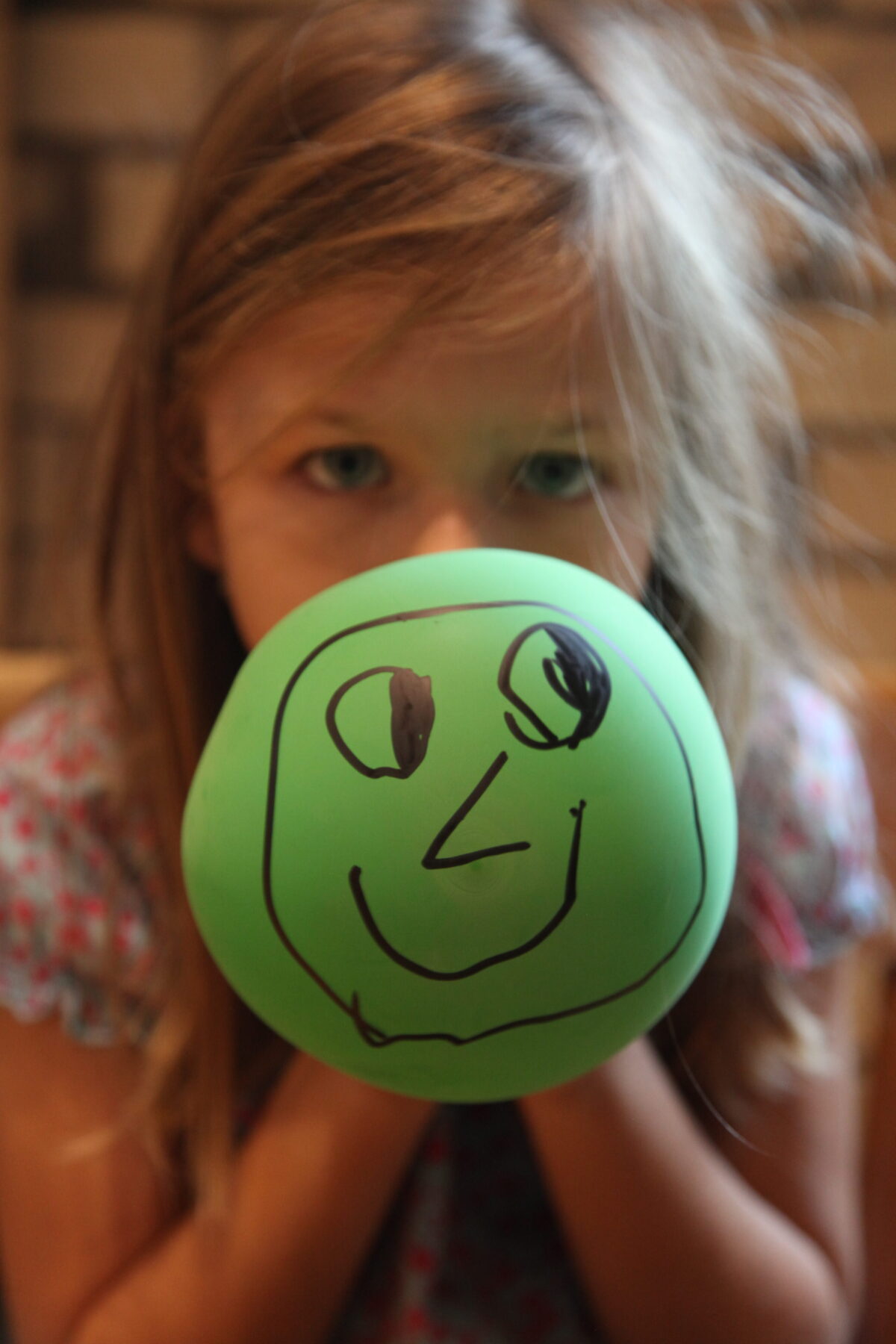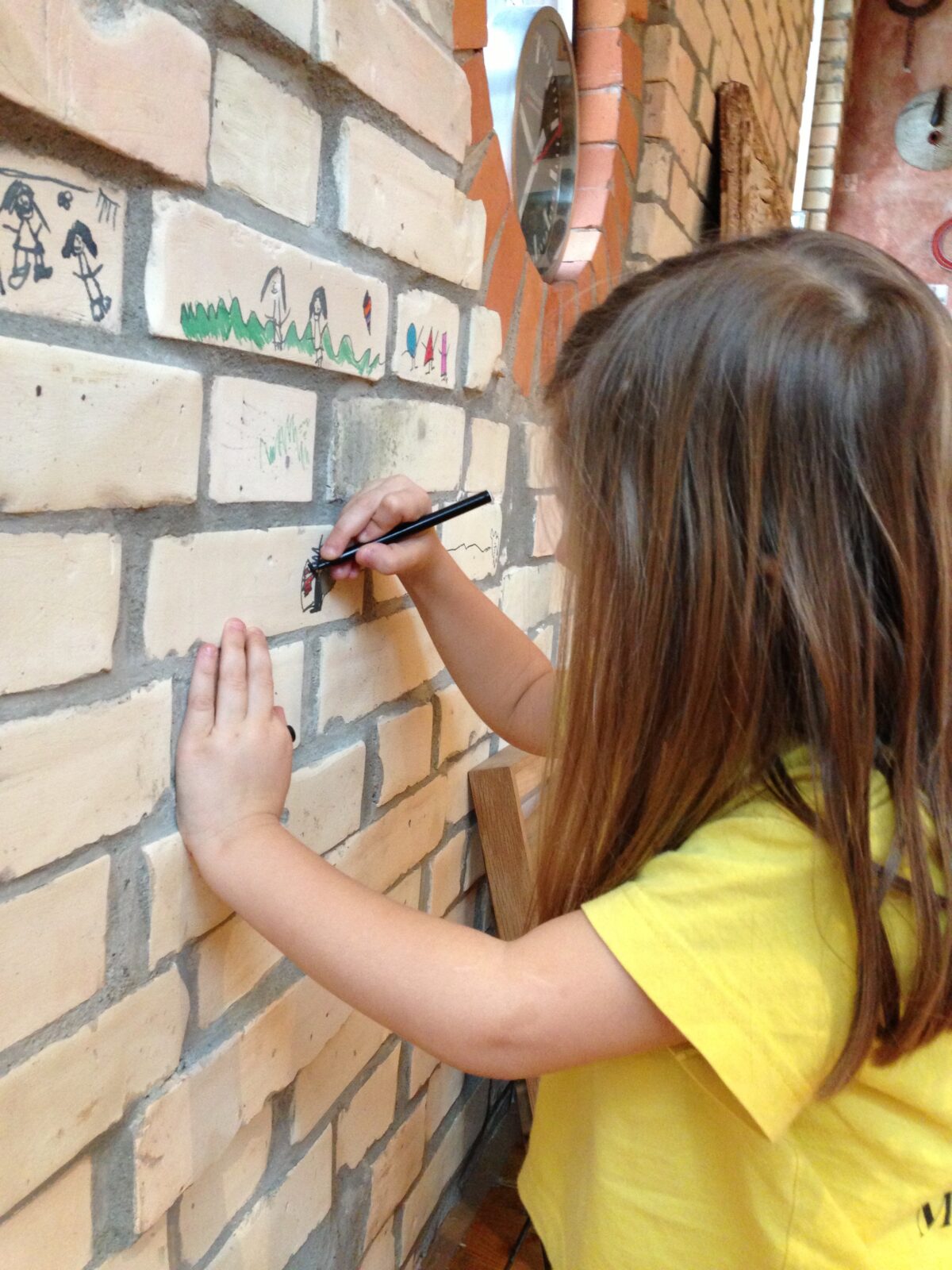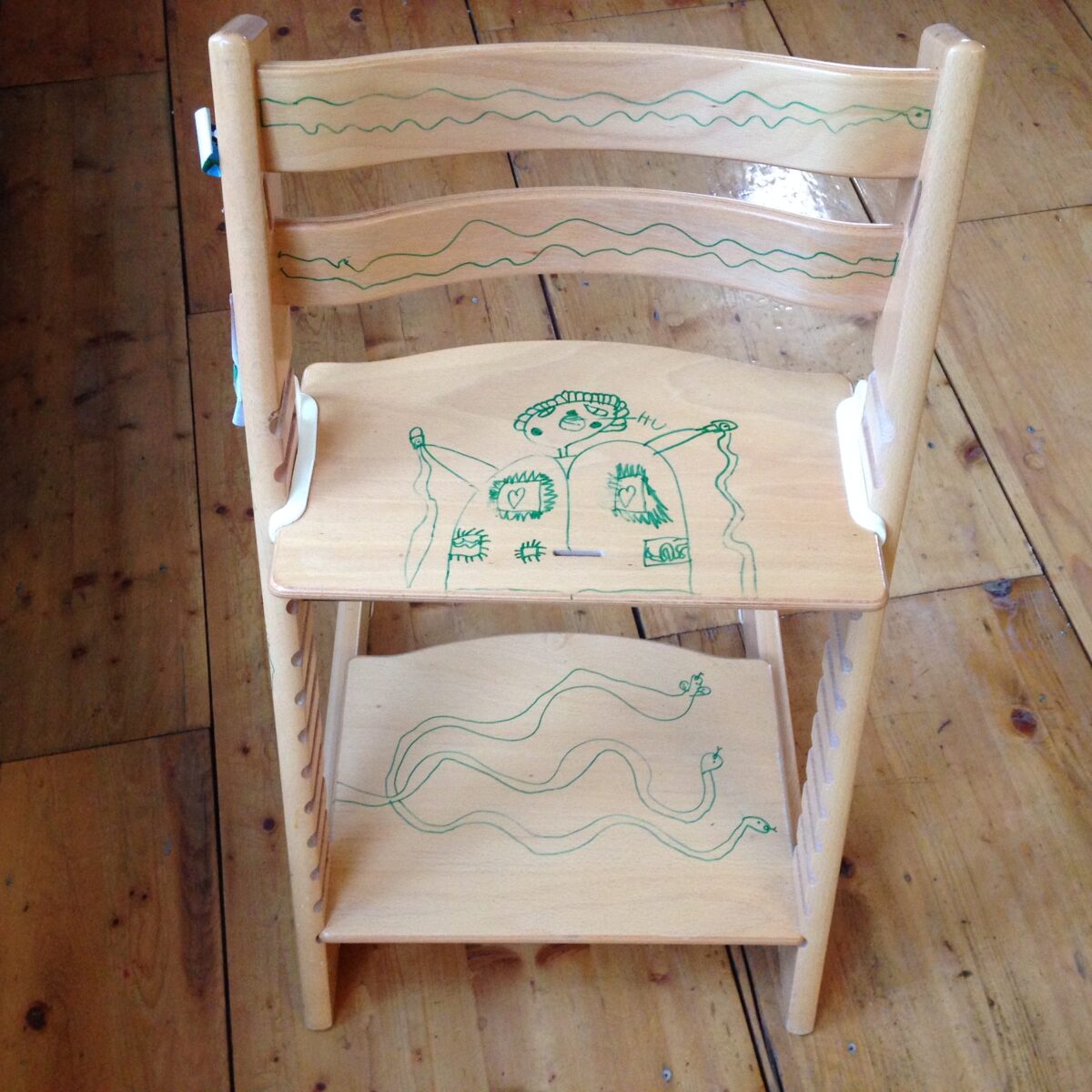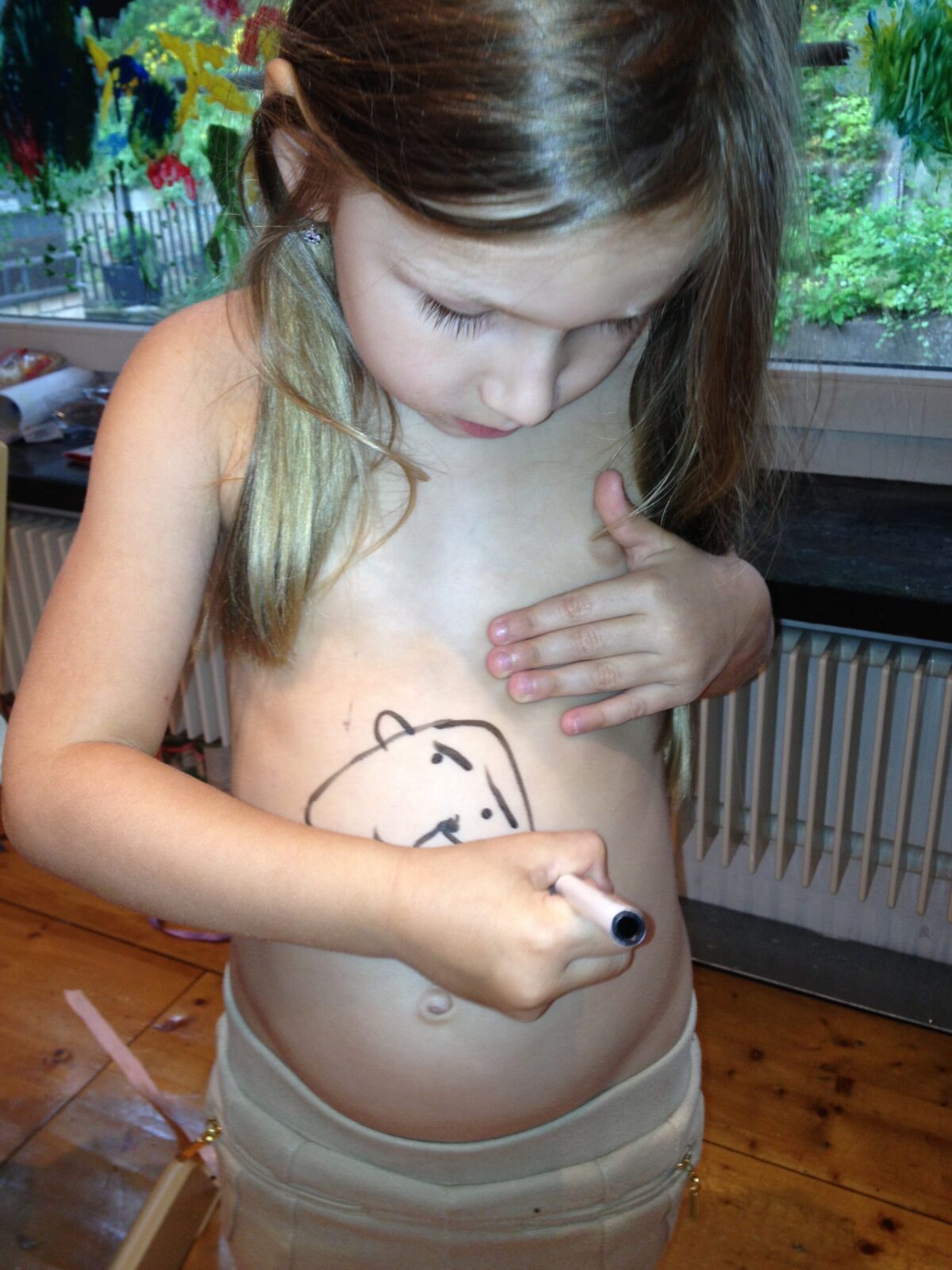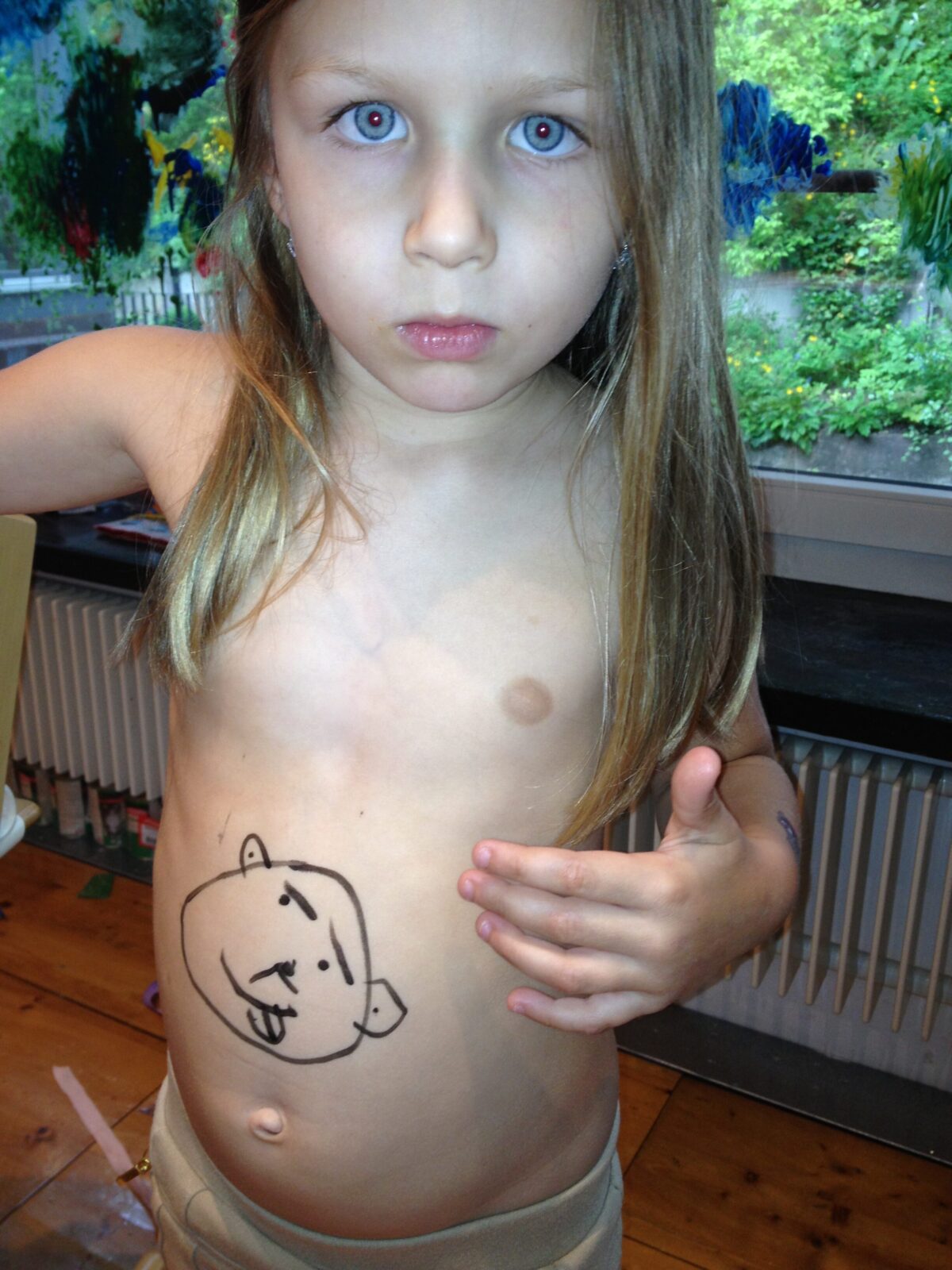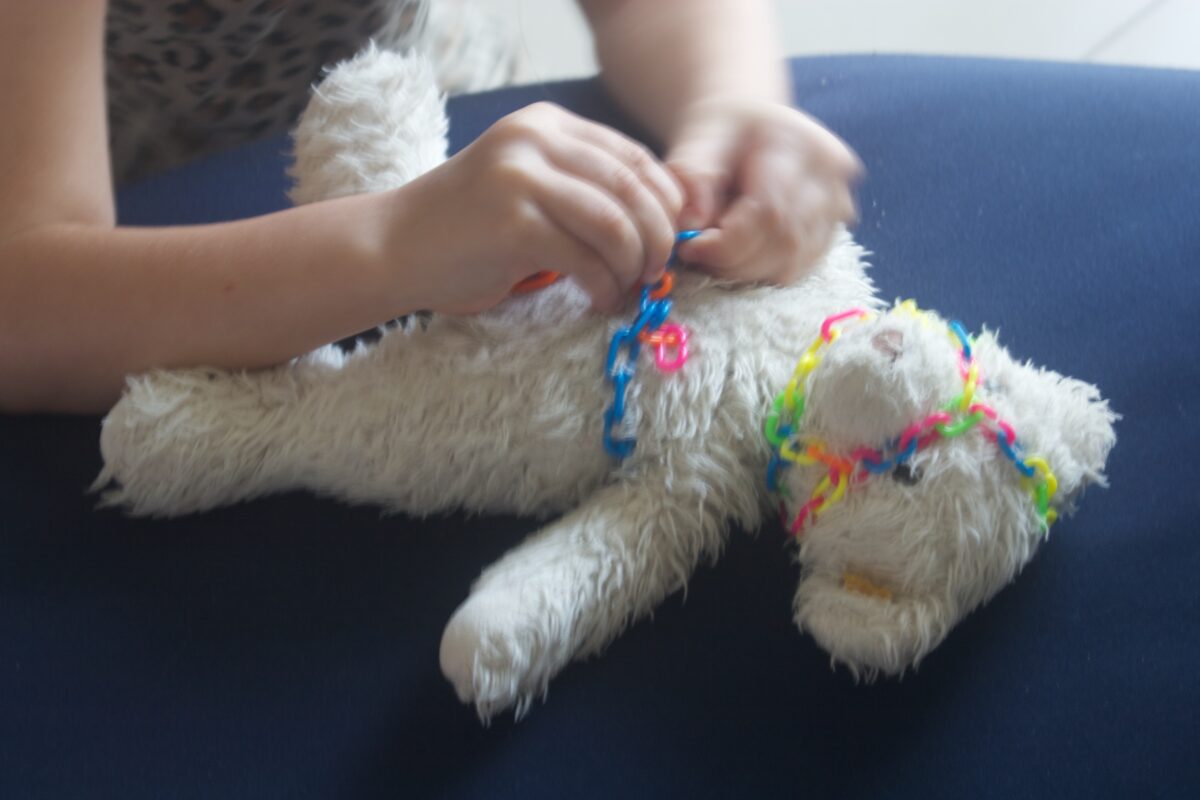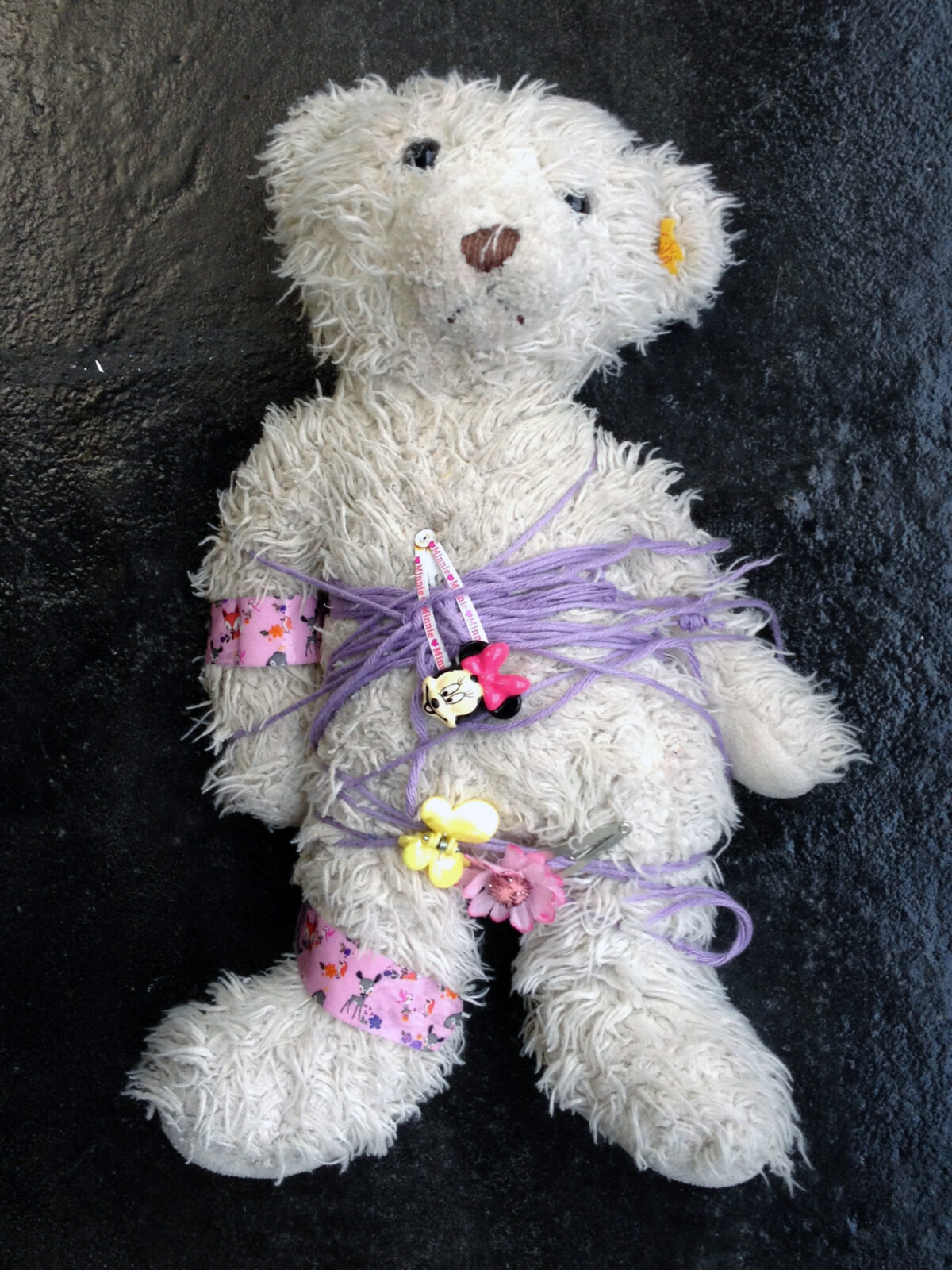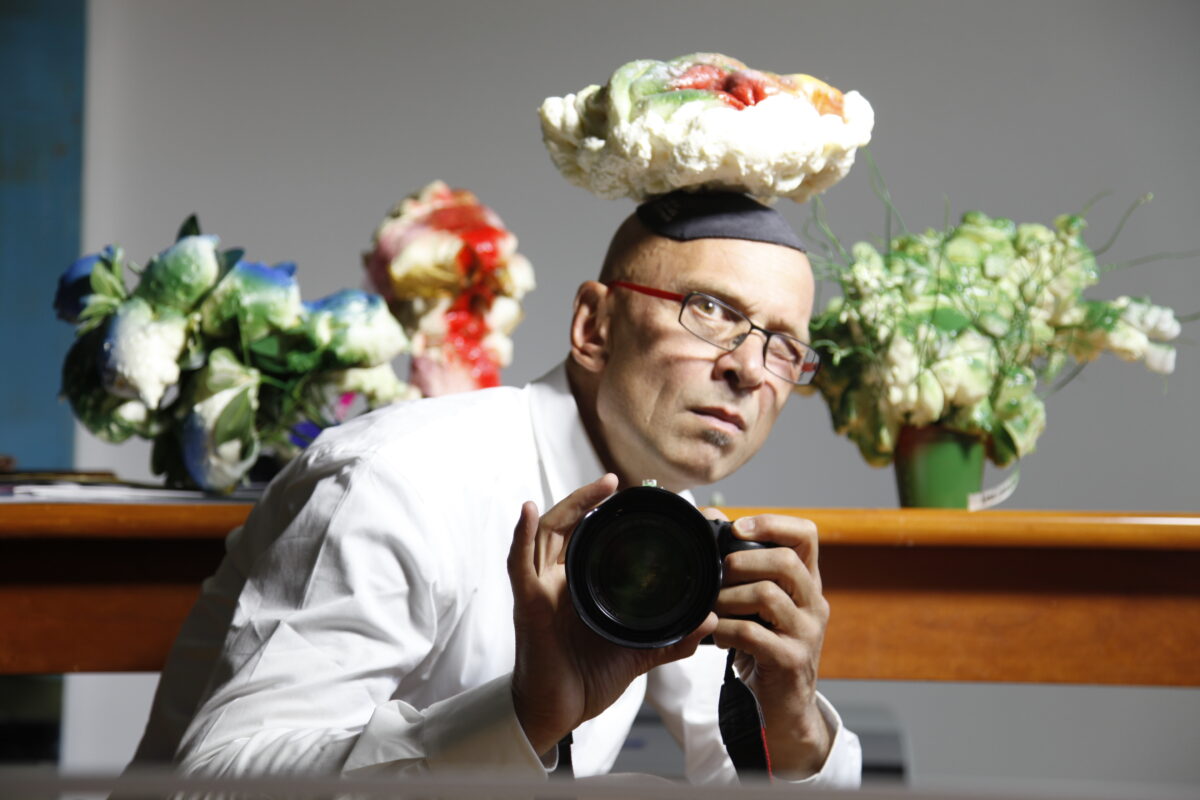Namoranna
2010–2016
“When our daughter Anna was born in 2008, I was already a “retired artist”. I had finished my exhibition work and the theater performances of the 90s and devoted myself entirely to the work of Miroslav Tichý and my medical work.
Like every child, Anna was a born artist. Children and artists transform the world through play. Whatever Anna looked at looked back. She sang, drew, built sculptures – like all children. I was amazed, collected her products and photographed Anna. Her fresh, irrepressible creativity inspired me. I started drawing with her. We drew on a sheet of paper at the same time or we reworked the other’s sheet in dialogue and then gave it back and drew over it again. At the time we called ourselves the artist duo “Namoranna”. We drew not only on white paper, but also on pictures and graphics that I bought in the thrift store. Anna stuck her colorful glue on pictures and drew her mythical creatures with colored pencils. We also drew, wrote and painted on the kitchen table. At some point the table wandered into the studio. It became “La Grande Table”, a story about our world and the universe, from its beginning to the present day, about the origin of life and the demise of the dinosaurs, about the meaning of life and death and especially about love. Playing with children brings back memories of one’s own childhood.
When I was a child in the 1950s, I spent a lot of time with my grandparents in Kyjov. My grandfather Oldřich was retired and had a lot of time – the most valuable thing you can give children. He was a musician and played Moravian folk music with friends until late at night. Grandfather Oldřich learned to draw and paint from his friend and neighbor Miroslav Tichý. His pictures and drawings remained amateurish, but were full of love. He copied flower pictures, Van Gogh pictures and religious pictures, which he also sold. Mirek Tichy also had time. He built me a swing in the garden and taught me photography when I was five. Magical doors opened. Even as a small boy, with Grandfather Oldrich and “Uncle” Mirek, I had an environment in which my childlike creativity could fully develop. Instead of becoming an artist, I was lucky enough to be able to remain an artist – for life. The artificial flowers were created in spring 2014. Life literally exploded out of the winter’s torpor. Bright green shot out of old gray branches. The bare Engimatt hill in front of my window showed new colors every day. There a wild tulip, here a rose, in the middle of the lush green of the garden. I started making sculptures out of polyurethane foam. After the PU foam had hardened, I painted it with spray paint. I bought artificial plastic flowers from a thrift store and worked on them with PU foam and paint sprays. I was interested in the boundaries between natural and artificial, beautiful and ugly, dead and alive. Plastic flowers are “kitsch” in its purest form and greatest density. They promise eternal beauty, joy and liveliness and deny mortality. I let the PU foam in the artificial flowers grow into tumor-like bulbs and formed metastases in the branches. I had defeated my tumor six years ago – now I could dare to work on it. Tumors have always existed since cells began dividing. They exist in all tissues of all living things – even plant cells can degenerate into tumors. Tumors are the flowers of evil on the tree of life. I gave the “fleurs du mal” their death back. When my six-year-old daughter Anna saw me working with polyurethane, she was immediately enthusiastic. She started making her own works out of construction foam. She made her own artificial flowers, which she then painted with paint sprays. Her ideas were very different from mine and we quickly learned from each other.
Like all children, Anna was a born artist. The creativity, intensity and immediacy of children’s creativity is the origin of all later artistic endeavours, postulated Paul Klee a hundred years ago. At the same time that Sigmund Freud declared art to be an illness and introduced the concept of sublimation to explain artistic activity. However, children’s creativity bubbles up like play from within every child. “Upbringing” ends this hopeful era of play and innate art. Only later in life will this artistic power have to find its way again – in particularly gifted or psychiatrically ill individuals. Creativity does not have to be taught, pulled or pushed. Even with chimpanzees, upbringing pursues the goal of adapting the individual to the needs of the horde. It serves not the child, but the adults, whose survival depends on shaping the subsequent generations for their purposes. Because this is the “generational contract”: children are supposed to adopt the rules of their parents, the horde, the state in order to look after the elderly. People are not born free, but prematurely – the result of an evolution that made the pelvis too small and the brain too large.”
- RB (December, 2024)
“When our daughter Anna was born in 2008, I was already a “retired artist”. I had finished my exhibition work and the theater performances of the 90s and devoted myself entirely to the work of Miroslav Tichý and my medical work.
Like every child, Anna was a born artist. Children and artists transform the world through play. Whatever Anna looked at looked back. She sang, drew, built sculptures – like all children. I was amazed, collected her products and photographed Anna. Her fresh, irrepressible creativity inspired me. I started drawing with her. We drew on a sheet of paper at the same time or we reworked the other’s sheet in dialogue and then gave it back and drew over it again. At the time we called ourselves the artist duo “Namoranna”. We drew not only on white paper, but also on pictures and graphics that I bought in the thrift store. Anna stuck her colorful glue on pictures and drew her mythical creatures with colored pencils. We also drew, wrote and painted on the kitchen table. At some point the table wandered into the studio. It became “La Grande Table”, a story about our world and the universe, from its beginning to the present day, about the origin of life and the demise of the dinosaurs, about the meaning of life and death and especially about love. Playing with children brings back memories of one’s own childhood.
When I was a child in the 1950s, I spent a lot of time with my grandparents in Kyjov. My grandfather Oldřich was retired and had a lot of time – the most valuable thing you can give children. He was a musician and played Moravian folk music with friends until late at night. Grandfather Oldřich learned to draw and paint from his friend and neighbor Miroslav Tichý. His pictures and drawings remained amateurish, but were full of love. He copied flower pictures, Van Gogh pictures and religious pictures, which he also sold. Mirek Tichy also had time. He built me a swing in the garden and taught me photography when I was five. Magical doors opened. Even as a small boy, with Grandfather Oldrich and “Uncle” Mirek, I had an environment in which my childlike creativity could fully develop. Instead of becoming an artist, I was lucky enough to be able to remain an artist – for life. The artificial flowers were created in spring 2014. Life literally exploded out of the winter’s torpor. Bright green shot out of old gray branches. The bare Engimatt hill in front of my window showed new colors every day. There a wild tulip, here a rose, in the middle of the lush green of the garden. I started making sculptures out of polyurethane foam. After the PU foam had hardened, I painted it with spray paint. I bought artificial plastic flowers from a thrift store and worked on them with PU foam and paint sprays. I was interested in the boundaries between natural and artificial, beautiful and ugly, dead and alive. Plastic flowers are “kitsch” in its purest form and greatest density. They promise eternal beauty, joy and liveliness and deny mortality. I let the PU foam in the artificial flowers grow into tumor-like bulbs and formed metastases in the branches. I had defeated my tumor six years ago – now I could dare to work on it. Tumors have always existed since cells began dividing. They exist in all tissues of all living things – even plant cells can degenerate into tumors. Tumors are the flowers of evil on the tree of life. I gave the “fleurs du mal” their death back. When my six-year-old daughter Anna saw me working with polyurethane, she was immediately enthusiastic. She started making her own works out of construction foam. She made her own artificial flowers, which she then painted with paint sprays. Her ideas were very different from mine and we quickly learned from each other.
Like all children, Anna was a born artist. The creativity, intensity and immediacy of children’s creativity is the origin of all later artistic endeavours, postulated Paul Klee a hundred years ago. At the same time that Sigmund Freud declared art to be an illness and introduced the concept of sublimation to explain artistic activity. However, children’s creativity bubbles up like play from within every child. “Upbringing” ends this hopeful era of play and innate art. Only later in life will this artistic power have to find its way again – in particularly gifted or psychiatrically ill individuals. Creativity does not have to be taught, pulled or pushed. Even with chimpanzees, upbringing pursues the goal of adapting the individual to the needs of the horde. It serves not the child, but the adults, whose survival depends on shaping the subsequent generations for their purposes. Because this is the “generational contract”: children are supposed to adopt the rules of their parents, the horde, the state in order to look after the elderly. People are not born free, but prematurely – the result of an evolution that made the pelvis too small and the brain too large.”
- RB (December, 2024)
